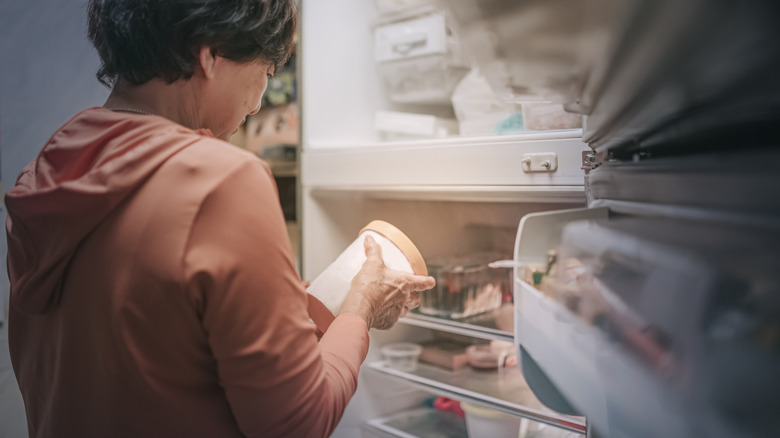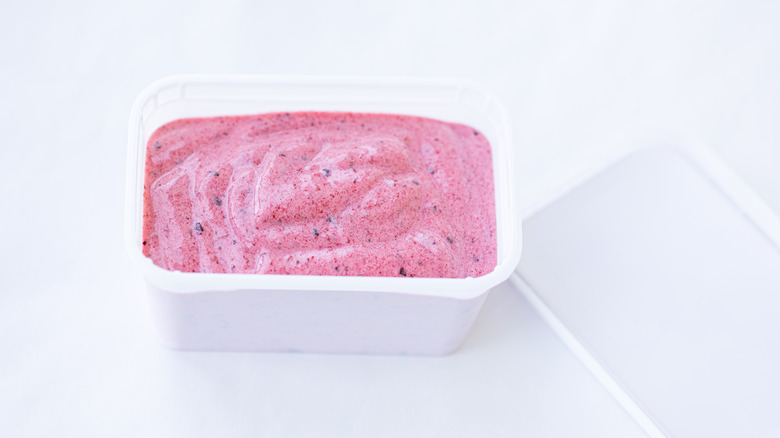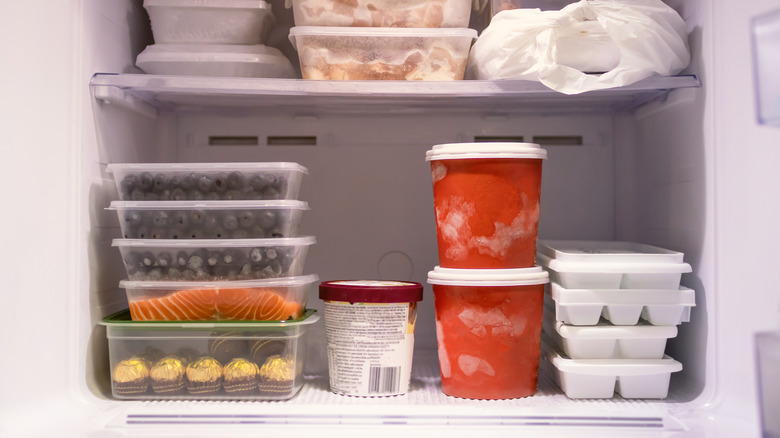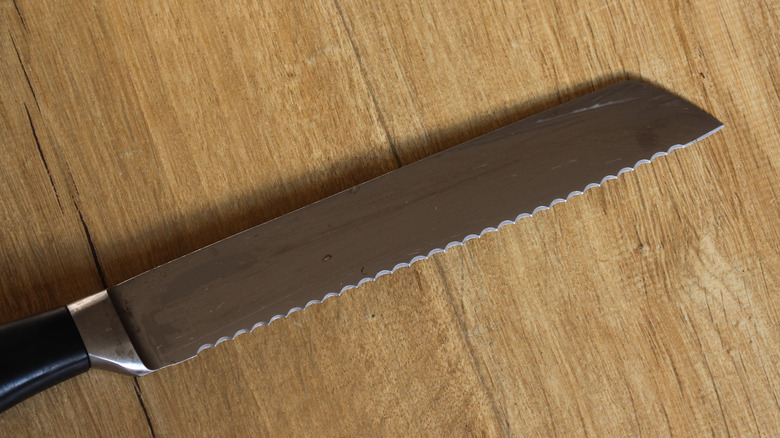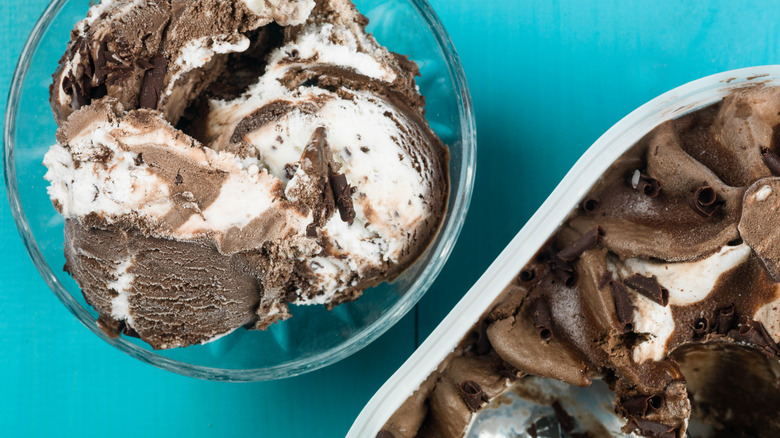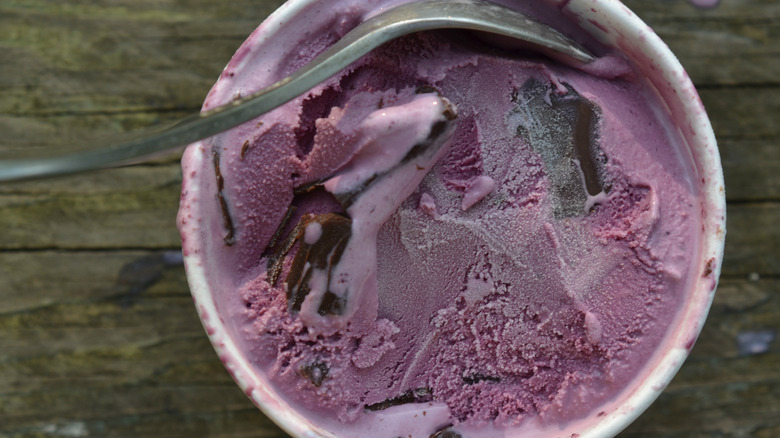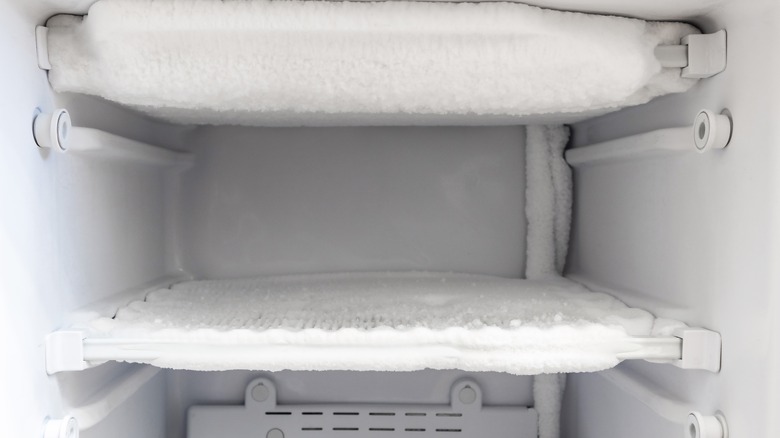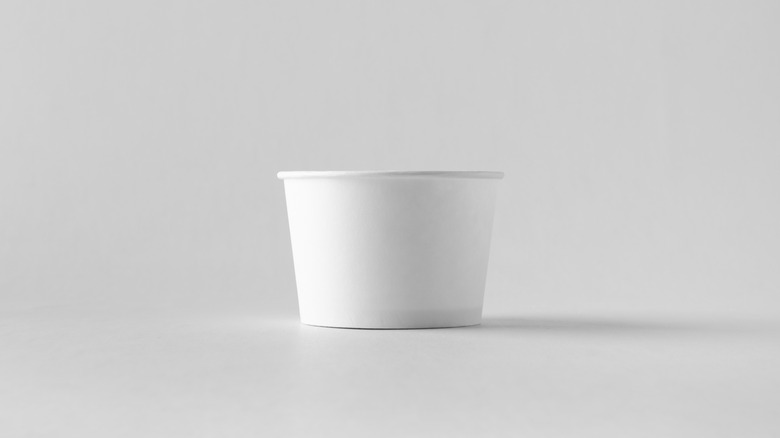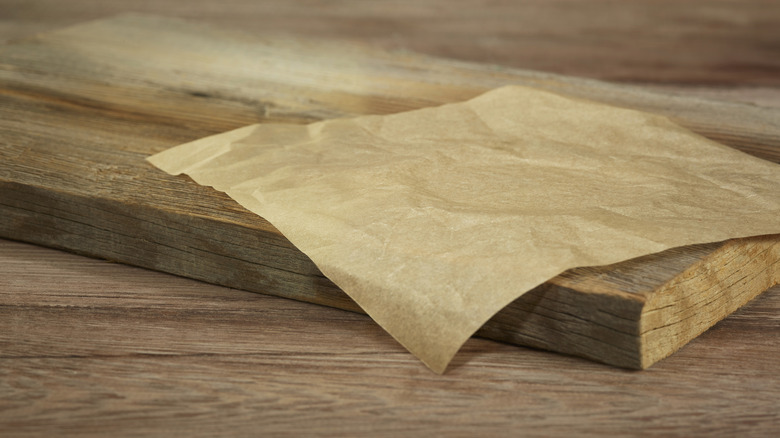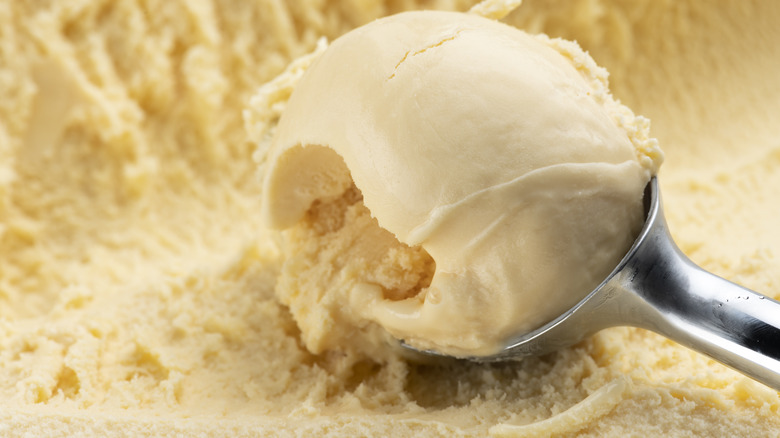11 Mistakes You Might Be Making When Storing Ice Cream
Ice cream is one of mankind's greatest inventions. Although this treat has existed in various forms for thousands of years, it's only been relatively recently that we've been able to enjoy it whenever we please. And nowadays, with the most popular ice cream flavors like vanilla, chocolate, and strawberry sold in grocery stores across the country, there's also an enormous range of ever-more-inventive options. We're now seeing flavors like wasabi, rosemary, Everything Bagel, and Mac and Cheese, to name a few.
But whichever option you're going for, ice cream can be tricky to store. Although it might seem as simple as just putting your carton in the freezer and forgetting about it, this cold treat is still a dairy-based product that can melt very quickly, making it prone to easy spoilage and difficulty refreezing. Aside from this, unless you're eating your pint of ice cream in one go, storing an already-opened carton can leave it at risk of freezer burn or rapid deterioration. Luckily, the secret to keeping ice cream fresh and delicious starts by avoiding a few common mistakes.
1. Keeping it in your freezer door
Although keeping ice cream in the freezer door might ensure easy access, it's also one of the worst things you can do. Freezer doors are more prone to rising and falling in temperature than other parts of the machine, as they're constantly being opened and shut. This is an issue for most items in the freezer, but especially with dairy-based foods like ice cream.
Items that contain dairy are more likely to spoil when the temperature they're kept in is constantly fluctuating, and you may also degrade your ice cream by causing it to partially melt and refreeze successively. Avoid this by stashing your ice cream deep inside your freezer. Ideally, ice cream should be stored right at the bottom of your freezer, at the back of the shelf.
This area is the coldest part of the freezer, even in high-tech units that have good ventilation, due to the simple fact that warm air rises. Placing it at the back means that any warm air that is introduced from the outside will have a harder time reaching the ice cream. You should save your freezer door for items that won't be in there for long or are less prone to spoiling if slightly warmed up, like flour or nuts.
2. Not putting the lid on properly
While placing the lid back on after you've finished with ice cream may seem obvious, it's easy to forget to check that it's fully secured. And if your carton is made from cardboard, it can also be easy to have it bend out of shape since that will ruin the seal the lid provides. This is problematic as a loose lid can make ice crystals more likely to form on the surface of the ice cream. When the lid is loose, the ice cream has more contact with the moist air circulating in the freezer, allowing crystals to form. And over time, this will ruin the taste of the ice cream.
Your first priority should be to double-check that your lid is sealed correctly before putting it back in the freezer. If it's started to loosen, use some tape to secure it instead of trying to decant your frozen ice cream. Alternatively, you can wrap the whole container with plastic wrap or place it inside a Ziploc bag to further protect it. Just bear in mind that wrapping and unwrapping may become cumbersome, so only do this if you're planning on eating it all the next time around.
3. Storing it next to pungent foods
There's an art to where you place your ice cream in the freezer, and keeping it far away from strong-smelling food is key. Dairy products are particularly well-suited to soaking up smells from other foods. This can not only affect how they smell but their taste, too. If your ice cream is placed next to something pungent, and especially something uncovered, it's far more likely to end up tasting like that item.
If possible, you should keep your dairy items together on one shelf. Alternatively, ensure that your ice cream is kept alongside neutral-smelling foods to minimize the likelihood of it absorbing odors. In our opinion, though, a more logical way of approaching this issue is to ensure that every item in your freezer is well-covered, especially stronger-smelling food items. Keeping food uncovered in the freezer will lead to losing its flavor and texture fast, as moisture can escape way more easily, and the cold air around your freezer will wick it away, resulting in freezer burn.
4. Forgetting to slice your ice cream
Hacking away at a tub of solidly frozen ice cream to try and get some out does more than cause frustration. It can also risk you inadvertently piercing the cartoon or, more worryingly, your fingers. However, leaving your ice cream to thaw slightly before scooping it out also presents issues. If it's left out for too long, the ice cream will become overly soft and begin to melt. Refreezing it will leave you with a substandard dessert next time around.
Instead, remember that you should be slicing your ice cream. Take a sharp, serrated knife and portion out your ice cream by slicing the top part of the carton off directly through the carton itself. Peel off the carton, and place the ice cream in a bowl. Then, cover up the rest of the carton with plastic wrap or parchment paper, fully sealing it before placing it back in the freezer. You can also do this if the top of your ice cream has developed ice crystals. Bear in mind that this trick may only work for certain brands, and with especially thick cartons it may be more difficult to slice through them.
5. Keeping it past its use-by date
Once food has been placed in the freezer, you can quickly forget about when you bought it and assume it will last almost indefinitely. But ice cream is one of those foods that definitely shouldn't be kept past its sell-by date. According to Eclipse Foods, ice cream is especially prone to developing bacteria that can carry foodborne illnesses. This can happen even at colder temperatures in a freezer. It's especially likely to occur if you're placing it back in the freezer after scooping some out, as there's more risk of it warming up or cross-contamination.
Therefore, ice cream should always be thrown out once it's reached its use-by date, and may even need disposing of before that. If your ice cream is unopened, you'll generally have two to three months before it needs to be thrown out. Opened ice cream will deteriorate quicker than that and should be eaten or disposed of after six weeks. Ice crystals on the top of the product are a telltale sign that it's starting to lose its quality and freshness, but you should also keep an eye (and a nose) out for any discoloration or sour odors, which can indicate spoilage.
6. Forgetting to flip it upside down
Once you get ice cream home from the supermarket, the rules about how you store it start to change. And one storage mistake you need to avoid is forgetting to turn the carton on its head. When ice cream is pulled out of the freezer, it thaws fast, leaving the surface of it slightly liquidated when you refreeze it. Flipping it upside down will allow the liquid portion to drip onto the lid, stopping it from forming ice crystals on the rest of it.
There are a few keys to ensuring that this trick is successful. The first is to ensure that your lid is secured tightly so that it doesn't leak everywhere. The second is to make sure that you're only placing it back in the freezer if you're sure you're finished. If you take it out too soon, you risk the ice cream that's dripped onto the lid spilling out.
7. Not setting your freezer to a low enough temperature
You can follow every rule for storing ice cream to the letter, but unless your freezer is at a low enough temperature, you're doomed to fail. Failing to set your freezer low enough will prevent your ice cream from properly freezing throughout, leading to a host of issues. Not only will this hasten it losing its flavor and texture, but it will also mean that it's likely to spoil faster.
Ice cream should be consistently kept at 0 degrees Fahrenheit, or -18 degrees Celcius, for long-term storage. Nudging that up by even a few degrees will make your ice cream easier to scoop but also speed up its deterioration. While checking your freezer's thermostat will tell you the temperature, you can also do a firmness check on the ice cream. Give the sides of your carton a squeeze; If there's any significant give in it, it's likely not frozen enough. If, however, it's hard, it's reached a cold enough temperature. You can also buy an external thermometer to check the temperature of your freezer if you don't trust that your thermostat is giving the right temperature.
8. Using the wrong container
With ice cream, your container is key. Store-bought ice cream will naturally come in its own freezer-safe tub, but if you have cause to decant it, placing it into a container that's not leakproof, freezer-proof, or which is overly thin and unequipped to handle liquids (like some types of cardboard) will ruin your ice cream. The same rules apply to homemade ice cream, which has a far shorter shelf-life than store-bought, usually lasting around two weeks. However, that shelf-life can be significantly curbed if your choice of container is wrong.
When choosing a container, an airtight lid is crucial to limit air exposure to the food. Opting for a wide, flat container instead of a deep one will help the ice cream freeze quicker and give you more access when scooping it out. It's important to opt for food-grade containers that have been specifically made for storage to ensure that they don't have any residues or coating chemicals. Cardboard containers should always be freezer-safe and waterproof to limit the risk of leakage or dampness. It can also be a good idea to separate ice cream into individual portions and place it in freezer bags or smaller containers so you can pull out just the right amount any time you want.
9. Forgetting to use wax paper
Sometimes, simply closing the lid on your ice cream and putting it back in the freezer won't cut it. The more you dig into ice cream, the more it's exposed to the cold in your freezer, and every time you open and close the lid, you introduce more air to the surface. But a surefire way to avoid this is to create a seal on the top of your ice cream using wax paper. Once you're ready to put your ice cream back in the freezer, press some wax paper onto the creamy surface before closing the lid.
The paper acts as a barrier between the product and the air, limiting freezer burn. If you don't have any wax paper, you can use any other freezer-proof and moisture-proof wrapping material, like plastic wrap, parchment paper, or tin foil. Bear in mind that you'll want to create the most secure seal possible, so try to scoop your ice cream out in an even manner, giving you a flat surface to work with. If you're pretty far into your ice cream tub, it may help to cut the paper or plastic wrap out to place it inside so it doesn't loosen when you put the lid on.
10. Putting it back in the freezer after using a hot scooper
It can be frustrating to wrestle with rock-hard ice cream, especially when you're craving it after dinner. But while warming up a scooper to easily and quickly prise some ice cream out may seem smart, it'll end up ruining your product. "What happens is that water from a wet scoop glazes your ice cream with a thin layer of ice, and a hot and wet scoop actually melts ice cream too much," said Jeni Britton Bauer, founder of Jeni's Splendid Ice Creams on Insider. "Then the remaining ice cream will form ice crystals faster when you return it to your freezer."
Slicing off parts of your ice cream using a cold serrated knife is a more effective way of portioning it out without risking ice crystal formation. If you want to soften it, the best and arguably easiest way is to transfer it from the freezer to the refrigerator and leave it for around 10-30 minutes. While this can take a bit longer than using a hot scoop, it allows for temperature-controlled softening, preventing the ice cream from becoming overly warm and liquidated. You can also leave it at room temperature briefly — just keep an eye on it to make sure it doesn't melt too much.

